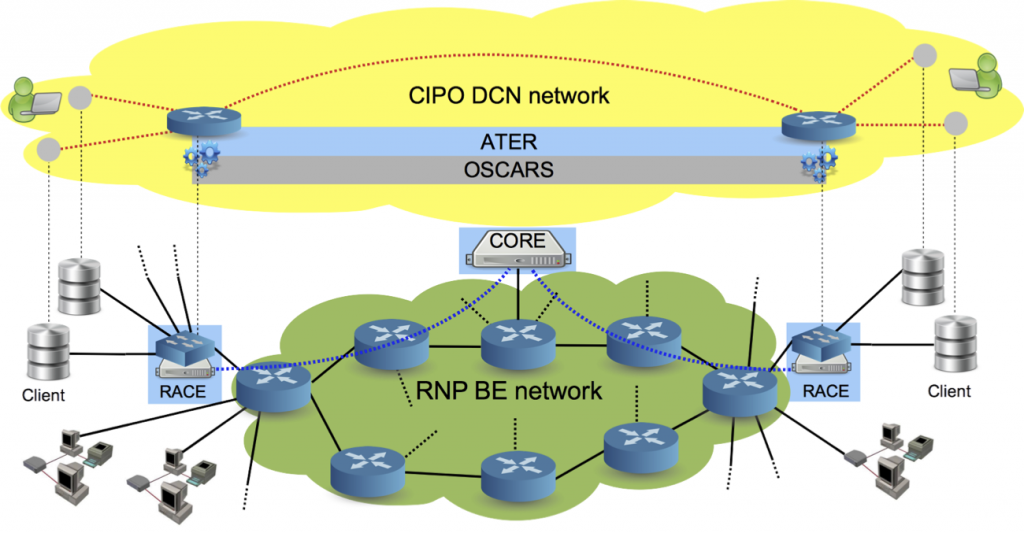Networks that offer both the traditional IP packet forwarding and a virtual dynamic circuit service, also known as hybrid networks, are becoming widely available in many backbones. The benefits of this approach are well-known and some high-volume traffic applications, e.g., high-energy physics and astronomy, can obtain significant improvements by using circuits. Previously to our solution, end-users depended on specific-purpose applications or the full assistance of network operators to connect their data sources and sinks to circuits. Our solution, called ATER, is a general-purpose system that transparently connects end-users network infrastructure to both services of a hybrid network. By employing high-level filtering rules, similar to conventional IP packet filters, end-users can choose which part of their traffic must flow through circuits and which part must continue flowing through the traditional forwarding. These rules are applied to OpenFlow devices, which properly switch the flows between the forwarding services and automatically trigger the creation of a circuit as necessary.
The figure below illustrates how ATER plugs into a hybrid network and its corresponding middleware. In this figure, ATER employs the hybrid network deployed in RNP (Brazilian National Research and Educational Network). This hybrid network employs OSCARS as the middleware for the DCN service, which is named CIPO DCN. Nowadays, RNP and ATER also support NSI (Network Service Interface) as way to access the DCN service. The conventional IP service is provided by the RNP BE network. The CORE component is deployed in a virtual machine, hosted in a datacenter, while each RACE component is instantiated in an intermediate appliance connected to the user’s network and the two other networks, DCN and BE.


